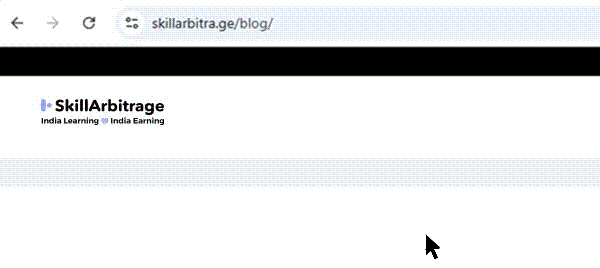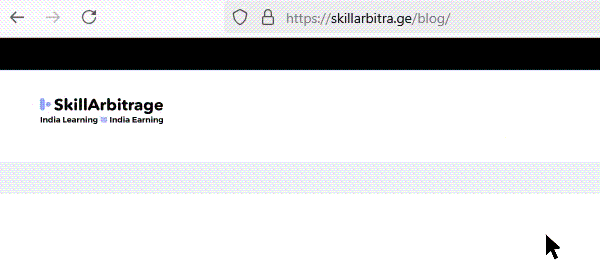Complete guide to Independent Director Data Bank registration in 2025. Step-by-step process, document requirements, subscription fees, troubleshooting tips, and profile optimization strategies for aspiring IDs.
Table of Contents
Registering with the Independent Director Data Bank can feel overwhelming at first, but I’m here to walk you through every step of the process. Whether you’re an existing independent director who needs to comply with regulatory requirements or an aspiring professional looking to enter the boardroom, this comprehensive guide will help you navigate the entire registration journey—from document preparation to profile optimization.
Apart from being a compliance requirement, Independent Director Data Bank is your gateway to board opportunities across India, offering access to learning resources and connecting you with companies actively seeking independent directors. Let me show you exactly how to register, avoid common pitfalls, and maximize your profile’s visibility.
Understanding independent director data bank
What is the independent director data bank?
The Independent Director Data Bank is an official online platform created and maintained by the Indian Institute of Corporate Affairs (IICA) under the authorization of the Ministry of Corporate Affairs (MCA). Think of it as a centralized repository where independent directors—both existing and aspiring—can register their professional profiles, making themselves discoverable to companies seeking qualified board members.
The databank serves as a one-stop solution that bridges two critical needs. On one side, you have professionals with diverse expertise looking for independent director opportunities. On the other, companies required to appoint independent directors need a verified pool of qualified candidates. The platform brings these two groups together efficiently.
What makes this databank particularly valuable is that it’s not just a directory. It’s an entire ecosystem that includes e-learning courses, proficiency testing, and ongoing professional development resources. When you register, you’re not just adding your name to a list—you’re joining a professional community designed to elevate corporate governance standards across India.
What are the key objectives and legal framework behind the Databank?
The ID Databank draws its legal authority from Section 150 of the Companies Act, 2013, which specifically empowers the Central Government to create and maintain a databank of individuals willing and eligible to be appointed as independent directors. The Ministry of Corporate Affairs notified the Companies (Creation and Maintenance of databank of Independent Directors) Rules, 2019 on October 22, 2019, formally establishing this system.
The primary objectives behind creating this databank are multifaceted. First, it aims to professionalize the institution of independent directors by creating a verified database of qualified individuals. Second, it provides capacity-building opportunities through integrated learning management systems, helping directors stay updated on regulatory changes, corporate governance best practices, and industry developments.
Furthermore, the databank promotes transparency and accountability. Companies can search for directors based on specific qualifications, industry experience, and expertise areas, ensuring better board composition. The platform also encourages diversity by making it easier for companies to discover candidates from varied professional backgrounds, including women directors and professionals from different industries.
Who is required to register in the Independent Director Databank?
Understanding who must register versus who can voluntarily register is crucial. According to the Companies (Appointment and Qualification of Directors) Fifth Amendment Rules, 2019, registration falls into two categories: mandatory and voluntary.
Mandatory registration applies to anyone currently serving as an independent director in any company as of December 1, 2019, or later.
If you’re already appointed as an independent director, you’re required to register with the databank. Additionally, anyone intending to be appointed as an independent director after December 1, 2019, must register before their appointment. This means companies can only appoint individuals whose names appear in the databank.
Voluntary registration is open to professionals who aspire to become independent directors but haven’t been appointed yet. This includes company secretaries, chartered accountants, lawyers, engineers, management professionals, and individuals from any field who possess relevant expertise and wish to explore board opportunities. You don’t need a Director Identification Number (DIN) to register voluntarily—you can use your PAN or Passport.
The registration requirement applies regardless of whether the company is listed or unlisted, public or private, as long as it meets the threshold criteria for appointing independent directors under the Companies Act, 2013.
What are the eligibility criteria for Independent Director Databank Registration?
The good news is that the eligibility criteria for registration in the Independent Directors (ID) Databank are quite inclusive. There is no minimum age prescribed under the Companies (Creation and Maintenance of Databank of Independent Directors) Rules, 2019 for registration in the Databank.
However, when it comes to actual appointment as an independent director in a listed company, there is an age requirement. As per Regulation 16(1)(b)(vii) of the SEBI (Listing Obligations and Disclosure Requirements) Regulations, 2015, a person must have attained the age of 21 years to be eligible for appointment as an independent director.
From an educational standpoint, you need at least a bachelor’s degree from any recognized university or institution. The degree doesn’t have to be in a specific field—law, commerce, arts, engineering, science, or any other discipline is acceptable. What matters more is your professional experience and expertise in areas relevant to corporate governance, such as finance, strategy, operations, technology, legal matters, or industry-specific knowledge.
There’s no nationality restriction—both Indian citizens and foreign nationals can register. Foreign nationals typically use their passport number for registration if they don’t have a DIN or PAN.
What are the benefits of ID Databank Registration?
Registering with the ID Databank opens multiple doors for your professional growth. The most obvious benefit is enhanced visibility to companies actively seeking independent directors.
Your profile becomes searchable by thousands of listed and unlisted companies registered on the platform, approximately 4000+ as on 21st October 2025. They can filter candidates based on industry experience, qualifications, location, and specific expertise—meaning the right opportunities can find you.
Beyond visibility, you gain access to IICA’s comprehensive Learning Management System (LMS), which offers over 40 e-learning modules covering topics like board essentials, corporate governance, financial prudence, securities law, and board practices. These courses are designed by experts and continuously updated to reflect regulatory changes. This isn’t just box-ticking education—it’s practical knowledge that makes you more effective in the boardroom.
Professional credibility is another significant advantage. Having your name in the official government-maintained databank adds legitimacy to your independent director credentials. Companies view registered directors as more serious, committed, and compliant professionals. The registration certificate you receive serves as proof of your commitment to good corporate governance practices.
The platform also facilitates networking within the independent director community through newsletters, webinars, and discussion forums. You’ll stay informed about regulatory updates, industry trends, and best practices. Furthermore, completing the online proficiency test (which I’ll discuss later) demonstrates your knowledge and can be a strong differentiator when companies shortlist candidates.
What do you need before registering with the Independent Director Data Bank?
Proper document preparation saves you significant time and prevents registration delays. Let me walk you through exactly what you need to have ready before you start the registration process.
What documents are required to complete the registration process?
First and foremost, you need identity proof.
This comes in three forms—you’ll use at least one:
- Your Director Identification Number (DIN) if you already have one,
- your Permanent Account Number (PAN), or
- your Passport (especially relevant for foreign nationals).
Make sure these documents are valid and the information matches across all your official records. Any mismatch between your PAN name and Aadhaar name, for instance, can cause verification issues.
For educational qualifications, keep digital copies of your degree certificates ready. You’ll need to specify your highest qualification, the institution name, year of passing, and the percentage or grade obtained. If you have professional certifications like CA, CS, CPA, CFA, or specialized diplomas, gather those certificates too. The platform allows you to add multiple qualifications, which enhances your profile’s appeal.
Professional experience documentation is crucial.
Prepare a chronological list of your career history including company names, designations, employment periods (start and end dates), and a brief description of your roles and achievements. If you’ve served as a director or Key Managerial Personnel (KMP) in other companies, you’ll need details like the company’s CIN, your appointment date, resignation date (if applicable), and the nature of directorship.
Additionally, you’ll need a recent passport-sized photograph (digital format, typically JPEG, with a white background) and your current contact information—an active email address and mobile number. These are critical because the platform sends your login credentials and important updates via email and SMS. Finally, have your Aadhaar card details ready for identity verification, though you may not need to upload the actual document.
What is a DIN (Director Identification Number)
A Director Identification Number (DIN) is a unique eight-digit number allotted by the Ministry of Corporate Affairs (MCA) to an individual intending to become a director of a company in India.
It serves as a permanent identification for all current and prospective directors and must be quoted in all filings, returns, and correspondence with the MCA. The requirement for obtaining a DIN is mandated under Section 153 of the Companies Act, 2013, which states that every individual proposed to be appointed as a director must apply for and obtain a DIN. Furthermore, Section 154 empowers the Central Government to allot the DIN upon receipt of the application.
Is DIN Mandatory?
DIN is not mandatory for registering with the ID Databank itself.
If you’re an aspiring independent director who hasn’t been appointed to any board yet, you can register using just your PAN or Passport number. This voluntary registration allows you to build your profile, access learning resources, and become visible to companies even before you have formal directorship experience.
However, DIN becomes mandatory once you intent to be appointed as a director of any company. At that point, you must obtain a DIN before appointment as a director. Many professionals choose to obtain DIN proactively before applying for board positions because it streamlines the appointment process and demonstrates preparedness. If you already have a DIN from previous or current directorship positions, you should definitely use it for registration as it auto-populates your existing directorship details from the MCA database.
How to apply for DIN if you don’t have one?
Obtaining a DIN is a straightforward online process through the MCA portal.
You’ll need to file Form DIR-3 (for residents), which requires your PAN, address proof, identity proof, a passport-sized photograph, and a small government fee. Once you submit the form with the required documents, the MCA typically processes the application within 3–5 working days and allots a unique DIN. You’ll receive the DIN certificate via email. This one-time identification number remains with you throughout your career and cannot be transferred or surrendered, even if you resign from all directorship positions.
In practice, most candidates engage a Company Secretary (CS) or Chartered Accountant (CA) to handle both the DIN application and the Digital Signature Certificate (DSC) process on their behalf. The total cost, including professional and government fees, usually ranges between ₹2,000 and ₹5,000.
If you’re serious about pursuing independent director opportunities, I recommend obtaining your DIN before starting the ID Databank registration. This approach gives you a more complete profile from day one and demonstrates your commitment to potential employers.
Can foreign nationals register without DIN?
Absolutely. Foreign nationals who don’t have a DIN or PAN can register in the ID Databank using their valid passport number. The registration process for foreign nationals is nearly identical to that for Indian residents, with passport serving as the primary identification document.
During registration on the MCA portal, you’ll select the passport option and enter your passport number, country of issue, and validity dates. The system will generate an OTP to your registered email and international mobile number for verification. Once verified, you’ll be redirected to the ID Databank portal where you can complete your profile.
Foreign nationals bring valuable international perspective and global best practices to Indian boards, and the platform actively encourages their participation. Just ensure your passport is valid for at least six months beyond the registration date to avoid any compliance issues.
Step-by-step process of registering with independent director databank
Now let’s dive into the actual registration process. I’ll break this down into five clear phases, walking you through each step with practical tips to avoid common mistakes.
Phase 1 – Initial registration on MCA portal
Your registration journey begins at the Ministry of Corporate Affairs portal.
This is the official gateway—you cannot directly register on the ID Databank website without first going through MCA.
Part I: Creating an MCA Account
To begin, you must create your MCA User Account.
Step 1: Go to the MCA Website
- Visit MCA Portal
- Click on Login/Sign up at the top-right corner of the homepage.
Step 2: Register as a User
- On the User Login/Registration page, click Register under User Login.
- In the User Registration section:
- Select Registered User as the User Category.
- Select Individual as the User Role.
- Enter your PAN card details (in CAPITAL letters).
- Select Registered User as the User Category.
- Click Next.
Step 3: Enter Personal Details
Fill in the following:
- First name, middle name (if any), last name
- Date of birth, gender, profession, and industry of operation
- Click Next.
Step 4: Enter Contact Details
- Provide your address, mobile number, and email ID.
Step 5: Set Password & Security Question
- Create a secure password.
- Choose a password recovery question for account recovery.
- Click Create my account.
Step 6: OTP Verification
- Enter the OTP sent to your registered mobile number.
- Registration is now complete.
Please note that Your User ID will be sent to your registered email.
Phase 2 – Redirection to IICA ID databank portal
Now that your MCA account is active, follow these steps:
Step 1: Login to MCA Account, if already logged in then skip this step.
- Go to MCA Portal.
- Click Login/Sign Up.
- Enter your email ID and MCA password, along with Captcha.
- Select Login for V3 Filing.
Step 2: Access ID Databank Services
- Once logged in, go to ‘MCA Services’ tab.
- From the dropdown, click ‘ID Databank Services’ → Individual Registration.
Step 3: Provide Identification Details
You will be asked:
- Do you have a valid DIN? (Yes/No)
or - Do you have a valid PAN? (Yes → Enter PAN number)
or - Do you have a Passport? (Yes → Enter Passport number)
Please note, if you have a valid DIN then you do not required PAN/Password for registration. In case you do not have a DIN then only apply using PAN or Passport.
You will receive an otp for verification. Fill in the OTP.
- Click Proceed.
- You will be redirected to the Independent Director’s Databank Portal.
Step 4: Login to Databank Portal
- Click Login with OTP.
- Enter your email ID or mobile number, then request OTP.
- Enter the OTP received and click Login.
Once logged in, you’ll land on your dashboard.
Don’t be overwhelmed by the interface—we’ll navigate it together.
The first thing you’ll notice is that some of your information is already pre-filled. This data comes from the MCA21 database and includes your DIN (if applicable), name, date of birth, father’s name, registered mobile number, and email address.
Importantly, you cannot edit this pre-filled information directly on the databank—any corrections require filing Form DIR-6 or DIR-3 KYC with MCA.
Take a moment to review this pre-populated data for accuracy. If you spot any errors in your name spelling, date of birth, or father’s name, don’t proceed further. Instead, pause the registration and file the appropriate correction form with MCA first. This might seem like a delay, but it prevents bigger problems later when your registration certificate and profile contain incorrect information.
Phase 3 – Profile completion and information submission
Now comes the most detailed part of registration—filling out your comprehensive profile. This section determines how companies perceive you, so invest time in doing it well.
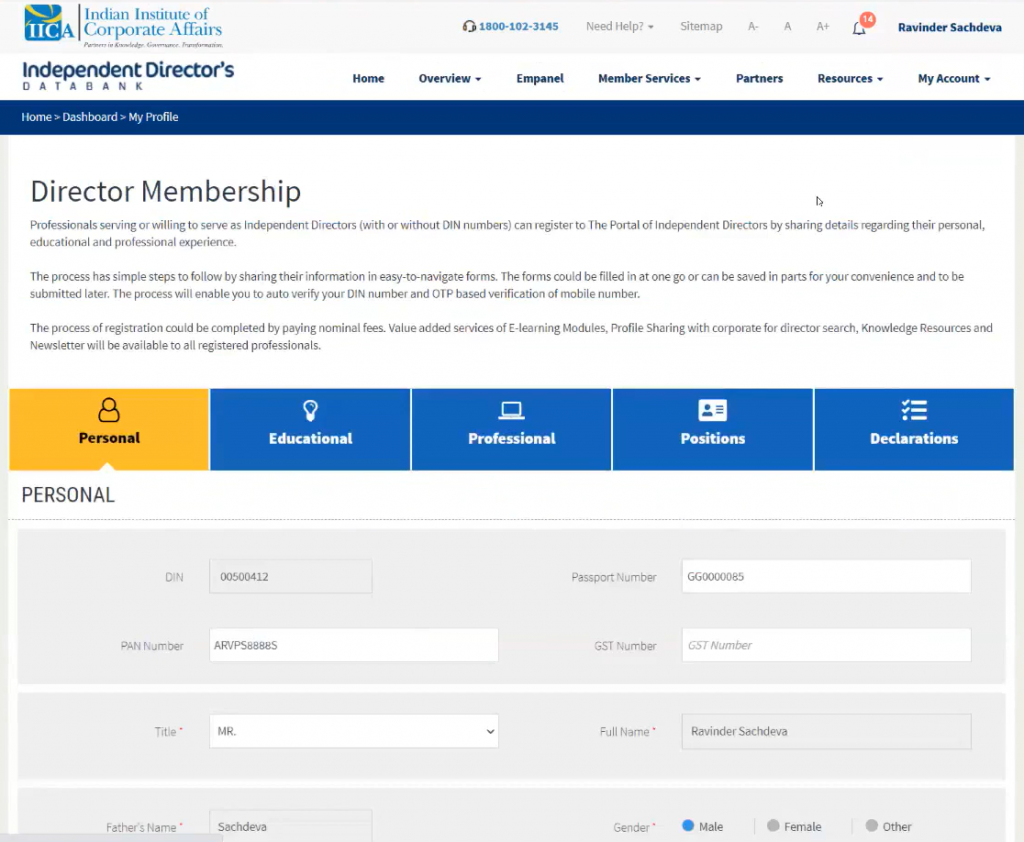
What personal and educational details should you fill in?
The profile section is divided into several tabs: Personal, Educational, Professional Experience, Directorship/KMP Positions, and Declaration. Let’s tackle each one strategically.
In the Personal tab, you’ll add information beyond what’s pre-filled.
Enter your complete current address with PIN code, permanent address (you can mark it as same as current address if applicable), nationality, and upload your photograph. For the photo, use a recent passport-sized image with a white background in JPEG format. The file size should typically be under 200 KB.
The Educational tab is where you showcase your academic credentials. Start with your highest qualification and work backward. For each degree, enter the institution name, degree title, year of passing, and percentage or grade. If you have professional certifications (CA, CS, CPA, MBA, LLB, etc.), add them here.
Don’t just list degrees—this section signals your knowledge foundation to companies. If you’ve attended relevant director training programs or specialized courses, mention those too.
How to structure ‘Professional’ and ‘Positions’ sections
The Professional section is where you outline your career history, excluding directorships or Key Managerial Personnel (KMP) roles such as CEO, CFO, CS, or Manager — those must be entered separately in the “Positions” tab. This section focuses on your broader professional experience and forms an important part of how companies assess your overall profile.
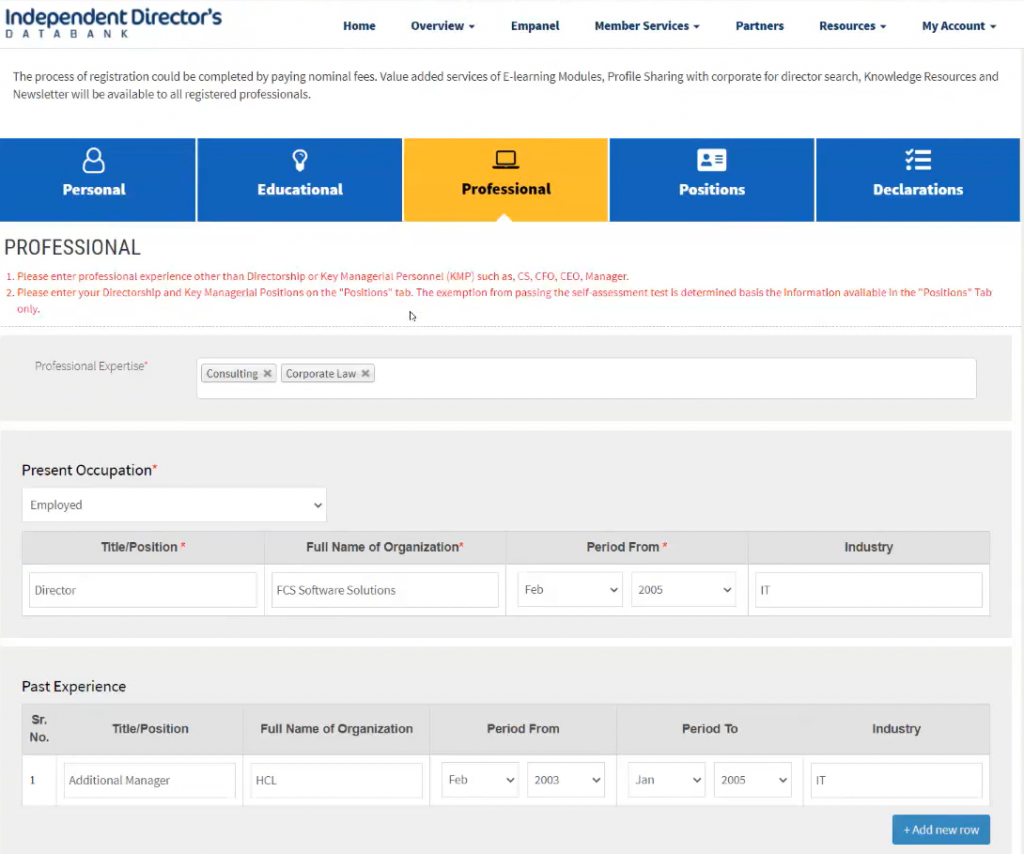
When filling this section, list your roles in reverse chronological order, starting with your current or most recent position. For each role, include:
- Title/position held
- Full name of the organisation
- Period of employment (start and end dates or “Present” if ongoing)
- Industry sector
Additionally, you will need to add your professional expertise (for example, consulting, corporate law, finance, etc.) from the options provided. This helps companies quickly identify the areas where you bring the most value.
When describing your experience, focus on skills and responsibilities that are relevant to board roles — such as strategic planning, risk management, financial oversight, regulatory compliance, stakeholder management, and industry-specific expertise. If you’ve handled P&L responsibilities, include the size of the revenue or budget. If you’ve led teams, specify the team size and scope. Concrete details make your experience more credible and impactful.
The Positions section is distinct and requires separate, careful attention — particularly if you are seeking exemption from the Proficiency Test. This section plays a crucial role in determining eligibility for exemption, as the decision is based on the information entered here. Any incomplete or inaccurate data could result in delays or rejection of your exemption request.
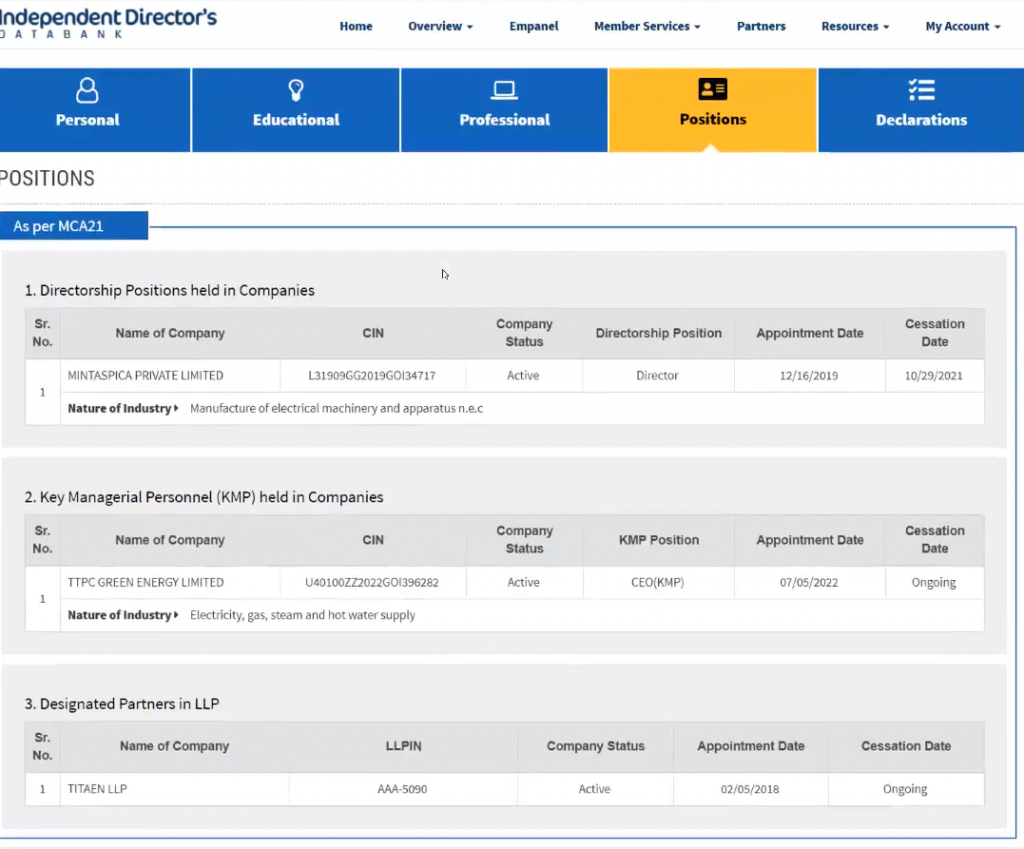
In the “Positions” tab, you must enter details of all companies where you have served as a Director or held a Key Managerial Personnel (KMP) role. If you registered using your DIN, some of this information may already be pre-populated from the MCA21 database. Review it carefully and add any missing details. For each position, you will need to provide:
- Name of the company
- Corporate Identification Number (CIN)
- Nature of the industry
- Designation or position held (for example, Director, CEO, CFO, etc.)
- Appointment date
- Cessation date (if applicable)
The section also includes space to record designated partner roles in LLPs, where applicable.
It is crucial to be accurate and complete in this section. Companies conduct thorough due diligence, and any discrepancies between your profile and public records can disqualify you from consideration. If you have not held any directorship or KMP positions yet, leave this section blank — your professional experience and qualifications in the previous section will still serve as strong indicators of your capabilities.
Understanding the ‘Declaration’ requirements
Before finalizing your profile, you must complete the Declaration section — and this is far more than a mere formality. It is a legal statement with significant implications, so take the time to review and respond to each question carefully and truthfully.
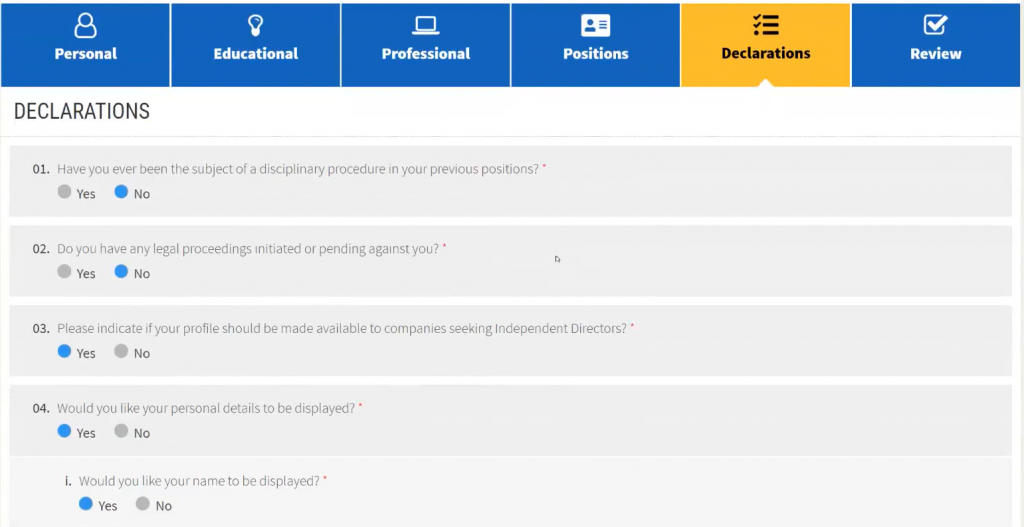
As you can see from the image, in this section, you will be asked to confirm key details regarding your eligibility, compliance, and legal standing. For instance:
- Whether you have ever been the subject of any disciplinary proceedings in your previous positions.
- Whether there are any legal proceedings initiated or pending against you.
- Whether you would like your profile and personal details to be displayed to companies seeking independent directors.
By submitting this declaration, you are confirming that all information provided in your profile is true, accurate, and complete to the best of your knowledge. You are also affirming that you are not disqualified under any provisions of the Companies Act, 2013 or any other applicable law from being appointed as a director. Finally, you acknowledge that you understand the duties, responsibilities, and obligations of an independent director as prescribed under the law.
After accepting the declaration, click “Submit” to save your profile.
The system will validate all mandatory fields. If anything is missing, it will highlight the incomplete sections. Review everything one final time before proceeding to payment.
Phase 4 – Subscription plan selection and payment
Comparing Subscription Plans (1 Year vs 5 Years vs Lifetime)
Once your profile is complete, you’ll select your subscription plan.
The ID Databank offers three options with different pricing structures. Understanding which plan suits your situation is crucial for cost optimization.
The 1 Year Plan costs Rs. 5,000 plus 18% GST (total Rs. 5,900). This plan is ideal if you’re just starting out and want to test the platform, or if you’re uncertain about your long-term commitment to pursuing independent director roles. It’s also suitable if you expect to be appointed soon and want to comply with the immediate regulatory requirement without a large upfront investment.
The 5 Year Plan is priced at Rs. 15,000 plus 18% GST (total Rs. 17,700). This works out to Rs. 3,540 per year—a 40% saving compared to renewing annually. Choose this if you’re serious about building a career as an independent director but want some flexibility. It’s the sweet spot for most professionals who are actively seeking board opportunities.
The Lifetime Plan costs Rs. 25,000 plus 18% GST (total Rs. 29,500). This is the most cost-effective option if you plan to remain in the databank long-term. The break-even point is around 5-6 years compared to annual renewals, and 7-8 years compared to the 5-year plan. I recommend this if you’re already serving as an independent director or are committed to board work for the foreseeable future.
Here’s an important consideration: if you miss a renewal deadline on annual or 5-year plans, you’ll face a late fee of Rs. 1,000 plus the regular renewal amount. With the lifetime plan, you eliminate this risk entirely. However, the lifetime plan doesn’t include refunds if your circumstances change, so assess your commitment level carefully.

Payment gateway options and process
After selecting your plan, you’ll be directed to the payment gateway.
The platform accepts multiple payment methods:
- net banking from all major Indian banks,
- credit cards (Visa, Mastercard, RuPay),
- UPI payments (Google Pay, PhonePe, Paytm, BHIM), and digital wallets (currently MobiKwik).
As per Government of India’s instruction, the option for paying through the debit card is currently not available.
Before making payment, there’s a critical step many people miss: enter your GSTIN if you have one. For individual professionals with GST registration, the GSTIN field is located in the “Personal” tab of your profile. For corporate users, it’s in the main registration form.
Why does this matter? Your GSTIN must be entered before payment to appear on your invoice, allowing you to claim input tax credit. The system cannot edit invoices post-payment, so this is your only chance.
When you click “Proceed to Payment,” you’ll be redirected to the secure payment gateway. Enter your payment details and complete the transaction. You’ll receive a transaction ID immediately. Keep this ID safe—it’s your proof of payment if any technical issues occur.
The payment processing usually happens instantly, but occasionally it can take 10-15 minutes for the confirmation to reflect in your dashboard. Don’t panic and don’t make multiple payments. If after 30 minutes your registration status hasn’t updated, note down your transaction ID and contact the IICA helpdesk.
Phase 5 – Registration certificate and invoice download
Upon successful payment, your registration is complete!
The system will generate two important documents: your Registration Certificate and your Invoice. Both will be available in your dashboard on the right side of the screen.
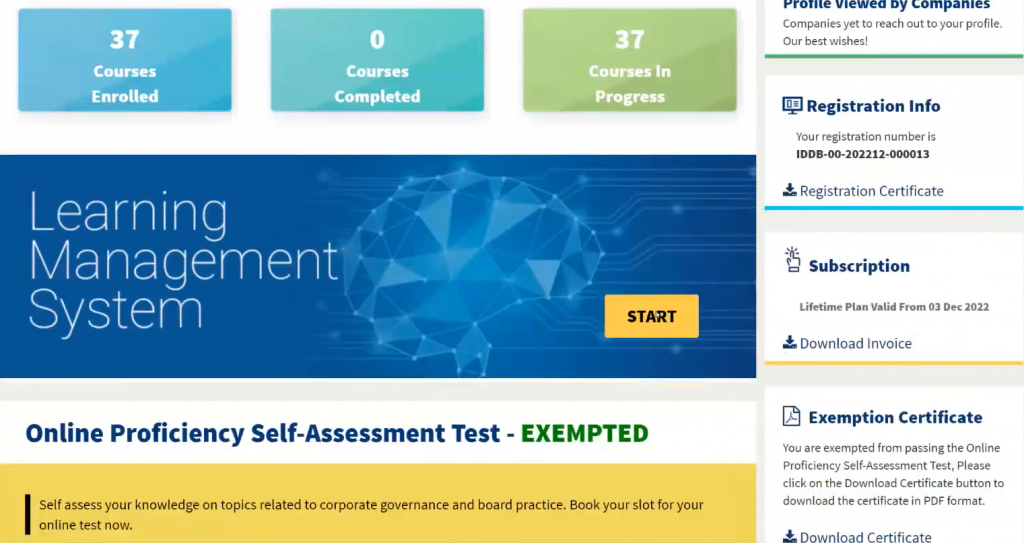
Your Registration Certificate is your official proof of empanelment in the Independent Director Databank.
It contains your unique Registration ID (an alphanumeric code that identifies you in the database), your name, the validity period based on your subscription plan, and the date of registration. This certificate is digitally signed by IICA and carries the official seal.
If you qualify for an exemption from the Online Proficiency Self-Assessment Test, the system will also generate a Proficiency Test Exemption Certificate at this stage. This certificate is available for download from the same “Documents” section of your dashboard and serves as official proof that you are not required to undertake the test under Rule 6(4). You can submit this certificate to companies along with your Registration Certificate when applying for board positions.
Download all available certificates immediately and save them in multiple locations—your computer, cloud storage, and email.
You’ll need the Registration Certificate (and the Exemption Certificate, if applicable) when applying for independent director positions or when making declarations to company boards. Print a few copies for your records. The certificate displays your validity date prominently, so you’ll know exactly when renewal is due.
The Invoice is equally important, especially for professionals who can claim business expenses or GST input credit. It shows the subscription fee, GST amount, total payment, your GSTIN (if entered), and payment transaction details. This invoice complies with GST regulations and can be used for accounting purposes.
Both documents (and the exemption certificate, if applicable) remain accessible in your dashboard throughout your registration period. However, I always recommend downloading them immediately—better safe than sorry if you face any technical issues accessing your account later.
How can you solve common problems during registration?
Even with careful preparation, technical issues can arise during registration. Here’s how to troubleshoot the most common problems I’ve seen users face.
What should you do if the OTP is not received?
OTP issues are the most frequent registration roadblock. If you don’t receive the OTP within 2-3 minutes after clicking “Send OTP,” don’t immediately request another one. First, check these common causes.
How can you fix the mobile number or email Mismatch with MCA Records
The most common reason for OTP failure is that your mobile number or email in the MCA database doesn’t match your current contact details. This happens when you’ve changed your phone number or email but haven’t updated your records with MCA.
To verify, think back to what mobile number and email you provided when you applied for your DIN or last filed forms with MCA. If you registered with MCA years ago, you might have changed contact details since then. The system will only send OTP to the mobile and email registered in MCA21, not to whatever you try to enter during ID Databank registration.
For email OTP issues, also check your spam or junk folder. Sometimes emails from government domains get filtered incorrectly. Add the ID Databank email domain to your safe senders list before requesting another OTP.
If you’ve confirmed that your current contact details don’t match MCA records, you need to update them officially before proceeding with ID Databank registration. This brings us to the next crucial step.
How can you update contact details with DIR-6 or DIR-3 KYC?
To change your mobile number or email address in MCA records, you must file either Form DIR-6 (for any changes in particulars) or Form DIR-3 KYC (annual KYC filing for directors) through the MCA portal. Both forms allow you to update contact information.
Form DIR-6 is specifically designed for intimating changes in particulars.
Engage a CS/CA to file DIR-6 or file the DIR-6 with the updated mobile number and email, if you know how to do it.
The form requires a filing fee and digital signature. Once processed (typically 2-3 working days), your new contact details will be updated in the MCA21 database.
Alternatively, if your DIR-3 KYC is due anyway, you can use that to update details. Every director with DIN must file DIR-3 KYC annually by September 30th. This form also has fields for mobile number and email, which get updated upon successful filing.
After your contact details are updated in MCA, wait 24 hours before attempting ID Databank registration again. The systems need time to sync. Then start fresh from the MCA portal’s ID Databank registration section.
How do you resolve login errors or account lockouts?
If you’ve received your login credentials via email and SMS but can’t log in to the ID Databank portal, several scenarios might be at play. First, verify you’re using the correct credentials. The username is typically your email address (the same one used during MCA verification), and the password is the temporary one sent via SMS or email.
Password-related issues are common.
If you’re certain you’re entering the password correctly but still getting an error, it might be a case-sensitivity issue—passwords are case-sensitive, so check your caps lock. Also, avoid copying and pasting the password from your SMS or email, as hidden characters sometimes get copied. Type it manually.
If you’ve tried logging in multiple times with incorrect credentials, the system might temporarily lock your account as a security measure. Wait for 30 minutes before trying again. If you’re still locked out, use the “Forgot Password” link on the login page to reset your password. You’ll need access to your registered email to receive the password reset link.
For situations where you’ve lost your credentials entirely, there’s no easy retrieval method. Your best option is to contact the IICA helpdesk via email at the support address mentioned on the ID Databank website. Provide your name, DIN/PAN number, and registered email address. They typically respond within 1-2 business days with instructions to reset your account.
What should you do if payment is deducted but registration is incomplete?
This is perhaps the most stressful situation—money debited from your account but no registration confirmation. Before you panic, understand that this is usually a temporary technical glitch, not a lost payment.
First, wait 30 minutes. Payment gateways and the ID Databank system sometimes experience minor delays in syncing transaction confirmations. During peak registration periods, the delay can extend to an hour. Refresh your dashboard after waiting and check if your registration status has updated.
If after an hour you still see “Payment Pending” or your profile shows incomplete status, log out and log back in. Sometimes the dashboard doesn’t auto-refresh. Check your email for any payment confirmation from the payment gateway.
You should receive two emails: one from the payment processor confirming transaction success, and another from ID Databank confirming registration.
If you’ve received payment gateway confirmation but not the registration confirmation, note down your transaction ID, order number, and payment date/time.
Log in to your ID Databank account and navigate to the payment section. There’s usually an option to “Verify Payment Status” or “Check Transaction Status.” Enter your transaction ID here and the system will attempt to reconcile the payment.
Still not resolved?
Now it’s time to contact support. Draft an email to the IICA helpdesk with the following information: your full name, DIN/PAN, registered email, transaction ID from payment gateway, amount paid, date and time of transaction, and bank name. Attach a screenshot of your bank debit statement showing the deducted amount. In my experience, the IICA team is responsive to payment issues and usually resolves them within 2-3 business days by manually verifying and completing your registration.
Browser compatibility and technical issues
Sometimes registration problems stem from browser compatibility issues rather than system errors. The ID Databank portal is optimized for specific browsers and settings, and using incompatible configurations can cause various problems—pages not loading, buttons not responding, or forms not submitting.
For the best experience, use updated versions of Google Chrome, Mozilla Firefox, or Microsoft Edge. Safari on Mac generally works well too. Avoid Internet Explorer as it’s outdated and not fully supported. Make sure your browser is updated to the latest version—outdated browsers often have security restrictions that interfere with government portals.
Enable JavaScript and cookies in your browser settings.
Many government portals, including ID Databank, rely heavily on JavaScript for form validation and page functionality. If JavaScript is disabled, forms won’t submit correctly. Similarly, cookies need to be enabled for maintaining your login session.
Clear your browser cache and cookies before starting registration, especially if you’ve attempted registration multiple times unsuccessfully. Old cached data can interfere with form submissions. After clearing cache, close the browser completely, reopen it, and start the registration process fresh.
If you’re registering on a mobile device, be aware that the portal is desktop-optimized. While mobile registration is possible, you might face layout issues or form fields that are difficult to interact with. For document uploads and detailed form filling, I strongly recommend using a desktop or laptop computer. If you must use mobile, use landscape orientation and the desktop version of the website (usually an option in your mobile browser’s settings).
Finally, ensure you have a stable internet connection. The registration process involves multiple page transitions and data submissions to different servers (MCA and IICA). A weak or intermittent connection can cause timeouts and incomplete submissions, leading to frustration and data loss.
What should you do after registering for the ID Databank?
Congratulations on completing your registration! But don’t stop here—your journey is just beginning. Let me guide you through maximizing the value of your ID Databank membership.
How can you navigate and use your dashboard effectively?
Once you log into the Independent Director’s Databank, the dashboard is the first screen you will see, and it serves as the central hub for all your activities on the platform.
At the center of the dashboard, you can view a summary of your learning journey. It shows the total number of courses you have enrolled in, how many you have completed, and how many are currently in progress. This provides a clear snapshot of your overall progress and helps you plan your next steps efficiently.
On the right-hand side, the dashboard provides important information and quick access to key actions. You can view how your public profile appears to companies searching for independent directors, check whether any companies have viewed your profile, and see your unique registration number along with the option to download your registration certificate. It also displays the details of your subscription plan and its validity period.
This section is significant because companies often consider candidates based on the completeness of their profile. Maintaining an updated profile and completing more courses can significantly improve your chances of being shortlisted.
It is advisable to check the dashboard regularly, as it is the quickest way to monitor your progress, download important documents, and ensure that your profile remains active and visible to potential opportunities.
How do you access the LMS and e-learning courses?
The Learning Management System is one of the most valuable benefits of your ID Databank membership, yet many registered directors never fully utilize it. Let me show you how to make the most of these resources.
What are the board essentials and board practice modules?
Access the LMS from your dashboard by clicking on the “start” on the “LMS” section. You’ll find courses categorized into two main groups: Board Essentials and Board Practice.
Board Essentials courses provide foundational knowledge about company law, corporate structures, and director responsibilities. These modules cover topics like the Companies Act 2013 provisions, incorporation procedures, share capital requirements, director liabilities, board committees (audit, nomination and remuneration, stakeholder relationship, risk management), general meetings, financial statements, and annual compliances. Think of these as your baseline knowledge—the minimum you need to understand corporate governance in India.
Board Practice courses take you deeper into practical application and advanced concepts. These cover board evaluation methodologies, exemplary board characteristics, due diligence before joining a board, building resilient companies, financial ratio analysis for directors, evaluation of independent directors, handling related party transactions, succession planning, ESG (Environmental, Social, Governance) considerations, crisis management, and digital transformation oversight.
Each course consists of multiple modules broken into 15-30 minute learning segments. They include video lectures, case studies, quizzes, and downloadable reference materials. The courses are self-paced, so you can learn according to your schedule.
How can you enroll and track your course progress?
The Learning Management System (LMS) section on your dashboard gives you a complete overview of your course journey. It clearly shows how many courses you have enrolled in, how many you have completed, and how many are currently in progress. This allows you to track your learning progress at a glance.
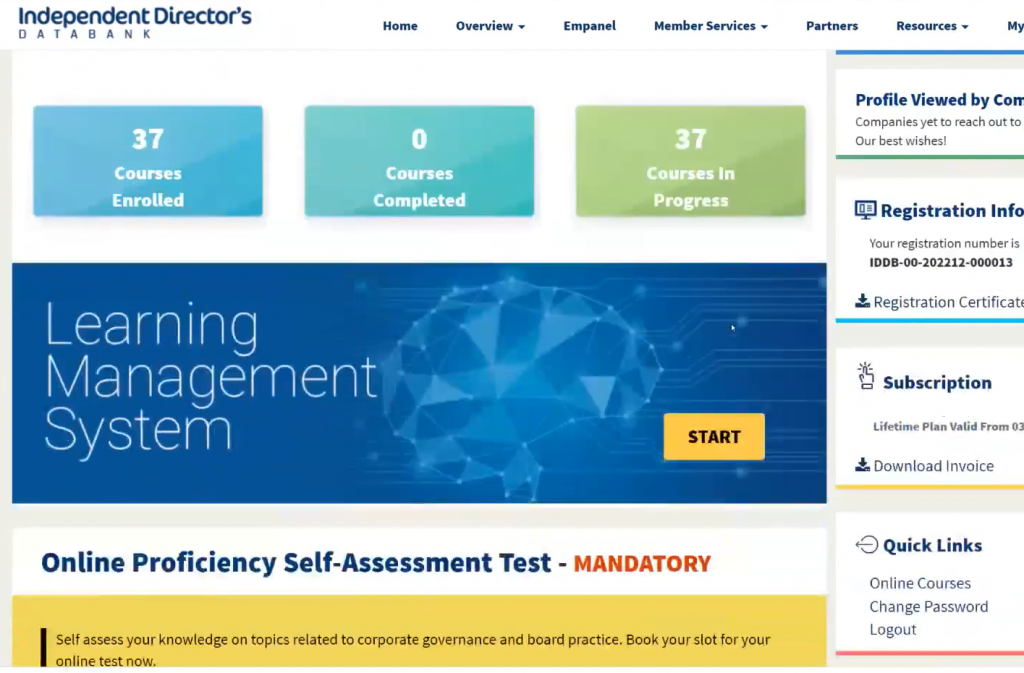
Enrolling in a course is straightforward.
You can browse the available modules in the course catalog and click on the course you wish to start.
Once enrolled, it will automatically appear in your dashboard under the enrolled courses count, and the system will keep updating your progress as you go through each module. You can enroll in multiple courses at the same time and complete them at your own pace.
Each module you complete is reflected in the dashboard, making it easy to monitor your progress. Many courses include assessments or quizzes designed to test your understanding of the material. Although passing them is not mandatory to proceed, they are extremely useful for reinforcing key concepts and preparing for the proficiency test.
It is advisable to complete at least 10 to 15 modules before attempting the proficiency test. Focus particularly on essential areas such as the Companies Act, directors’ duties and liabilities, board committees, financial statements, and corporate governance principles, as these form the core of the examination.
How do you prepare for the Online Proficiency Self-Assessment Test?
This test is a mandatory requirement.
Every registered independent director must pass this test within two year from the date of registration. If you fail to clear it within this timeframe, your name will be removed from the databank. So preparation is not optional—it’s essential.
The proficiency test is designed to assess your knowledge across four key areas:
- Companies Act 2013 and corporate governance principles,
- Securities laws and SEBI regulations,
- Basic accounting and financial prudence, and
- Board practices and ethics.
The test consists of multiple-choice questions covering these topics at varying difficulty levels.
Start your preparation immediately after registration—don’t wait for the deadline to approach. Dedicate 2-3 hours weekly to completing LMS modules systematically. Focus on understanding concepts rather than memorizing facts. Board scenarios and case-based questions require application of knowledge, not just recall.
Take advantage of the unlimited mock tests available on the platform.
These mock tests simulate the actual test environment and help you familiarize yourself with the question format, difficulty level, and time constraints. Attempt at least 3-5 mock tests before booking your actual test slot. Analyze your performance in each mock test—identify weak areas and revisit those LMS modules for reinforcement.
The platform also provides study guides, reference materials, and FAQs about the test. Download these resources and keep them handy. Join discussion forums or webinars if available—learning from other directors’ experiences and questions can be invaluable.
You can also check out my article on Complete Guide to Independent Director Exam to know more about how to prepare for the exam. And, if you are also looking for course that trains Independent Directors, you may also read my another article on Independent Director Course Guide.
How can you book and attempt the Proficiency Test?
Once you’ve completed sufficient preparation and are scoring consistently well in mock tests (aim for 70%+ in mocks), you’re ready to book your actual test slot. Navigate to the “Proficiency Test” section in your dashboard and click “Book Test Slot.”
You’ll see available dates and time slots.
The test is conducted online as a remotely proctored examination, meaning you can take it from your home or office, but you’ll be monitored via webcam throughout. Choose a date that gives you adequate preparation time but well before your one-year deadline. I recommend booking at least 1-2 weeks in advance as slots can fill up during peak periods.
Before the test, ensure you meet the technical requirements:
- a desktop or laptop with a working webcam and microphone,
- stable high-speed internet connection (minimum 2 Mbps),
- updated Chrome or Firefox browser, and
- a quiet, well-lit room free from distractions.
The system will run a system compatibility check before you can book your slot—complete this check to avoid last-minute technical issues.
On test day, log in 15 minutes early. The proctoring software will ask for permission to access your webcam and microphone—grant these permissions. You’ll be required to show your photo ID to the proctor via webcam for identity verification. Ensure your face is clearly visible throughout the test as the proctoring AI monitors for unusual behavior.
The test lasts 75 minutes and contains 50 multiple-choice questions. You need to score at least 50% in aggregate to pass. The questions are randomized, so each test taker gets a different set. Once you submit the test, results are usually available immediately.
If you don’t pass on your first attempt, don’t worry—there’s no limit on the number of attempts you can make. However, you must wait at least 24 hours between attempts. Use the failed attempt as a learning experience—the system provides a detailed performance report highlighting your weak areas. Focus your study on these areas before reattempting.
Once you pass, your proficiency test certificate is generated automatically and stored in your Documents section. This certificate is valid for a lifetime—there’s no need for periodic retesting unless future regulations mandate it. Download and save this certificate as it’s proof of your competency and a valuable credential when interviewing for board positions.
Who is exempt from taking the exam?
Rule 6(4) exempts specific categories from the proficiency test requirement: individuals who have been practicing as chartered accountants, cost accountants, company secretaries, or advocates for at least 10 years. These professionals’ extensive practice experience is deemed sufficient demonstration of requisite knowledge.
Also exempt are individuals with at least 3 years experience (calculated from databank registration date) as key managerial personnel or directors in:
- listed public companies,
- unlisted public companies with paid-up capital of ₹10 crore or more,
- foreign body corporates with paid-up capital exceeding $2 million,
- body corporates listed on any stock exchange, or statutory corporations established in India.
Government officials working in pay scales of Director or equivalent in central/state government ministries with experience in commerce, corporate affairs, finance, industry, or public enterprises are exempt, as are officials in Chief General Manager or above positions at SEBI, RBI, IRDAI, or PFRDA with experience in corporate/securities/economic laws.
Even if you qualify for exemption, you must still register with the Independent Director’s Databank and declare your exemption status with supporting documentation proving your qualifying experience or position.
Make sure to fill the “position tab” carefully because, the system will automatically declare that you are exempt from the proficiency test if you fall in the exemption category.
How can you optimise your ID databank profile for better visibility?
Getting registered is just the starting line.
To actually receive board opportunities, you need a profile that stands out when companies search the databank. Let me share strategies that increase your discoverability and attractiveness to potential employers.
Which keywords and profile fields boost discoverability?
Strategic keyword placement throughout your profile significantly improves searchability. Think like a company: what terms would they search for when looking for someone with your background?
In your professional experience descriptions, use industry-standard terminology.
Instead of vague descriptions like “managed team” or “handled projects,” use specific keywords: “risk management,” “financial oversight,” “regulatory compliance,” “digital transformation,” “ESG implementation,” “stakeholder engagement,” “strategic planning,” or “crisis management.” These are keywords companies search for.
Your expertise or skills section is prime real estate for keywords.
List 10-15 specific competencies relevant to independent director roles. Examples: corporate governance, board evaluation, audit oversight, compensation committee experience, SEBI compliance, FEMA regulations, mergers and acquisitions, succession planning, technology governance, or specific industry domains like banking, insurance, pharmaceuticals, manufacturing, or IT services.
Don’t keyword stuff—maintain natural readability.
But do ensure that your key strengths appear multiple times across different profile sections. If your strength is financial expertise, mention it in your summary, highlight it in your CPA/CA qualification, reference it in job descriptions where you handled financial responsibilities, and list it explicitly in skills.
How should you structure your professional experience to get shortlisted?
Your professional experience section is where you differentiate yourself from hundreds of other registered directors. Generic descriptions like “responsible for operations” don’t cut it. You need to tell a compelling story of value creation.
At the bottom of the professional tab you will find a field “Statement of Professional Expertise and work experience relevant for seeking board position.”
Use the STAR format (Situation, Task, Action, Result) for major achievements. Instead of saying “improved efficiency,” say “Led process reengineering initiative in manufacturing division (Situation), tasked with reducing production cycle time (Task), implemented lean manufacturing principles and cross-functional coordination (Action), resulting in 25% reduction in lead time and $2M annual cost savings (Result).”
Quantify everything you can.
Numbers grab attention: revenue managed, budget size, team size, percentage improvements, market share gains, cost reductions, or project values. If you were CFO of a company, don’t just say “CFO at ABC Ltd.” Say “Chief Financial Officer at ABC Ltd., a Rs. 500 crore manufacturing firm, overseeing finance function of 50+ employees, managing treasury operations, ensuring regulatory compliance, and implementing ERP systems.”
Highlight board-relevant experience even if it wasn’t a directorship role. If you served on internal committees, mention it: “Member of Risk Management Committee,” “Led Internal Audit function,” or “Participated in M&A due diligence teams.” These experiences signal board readiness.
For directors who’ve already served on boards, create a separate subsection for each directorship. List the company name, your tenure, nature of directorship (independent, non-executive, etc.), board committees you served on, and 2-3 key contributions. For example: “Independent Director, XYZ Ltd. (2018-2023) | Served on Audit Committee and Stakeholder Relationship Committee | Led governance framework overhaul improving board effectiveness ratings by 30%.”
Tailor your profile to the types of boards you’re targeting.
If you’re seeking positions in fintech companies, emphasize your technology and financial services experience. If you’re interested in manufacturing boards, highlight operational excellence and supply chain expertise. While you can’t create multiple profiles, you can structure your experience to showcase versatility while emphasizing your strongest domains.
How do you balance privacy with profile visibility?
The ID Databank platform offers privacy settings that control what information companies can see in your summarized profile versus what requires payment to access. Understanding these settings helps you balance professional visibility with personal privacy.
At minimum, companies can see your name, location (city/state), highest qualification, broad industry experience category, and years of experience in summarized search results. This basic information helps them decide whether to shortlist you for detailed viewing.
You can typically control visibility of specific details like your exact date of birth (showing only age range), complete address (showing only city/state), direct contact information (phone and email hidden until company pays for detailed profile), current employer name, and past company-specific details, PAN Number etc.
You can edit the privacy settings by clicking on ‘See Your Public Profile’ on the right side of the dashboard. This will take you to a page where you can either toggle the privacy settings on or off entirely or select specific information you want to hide.
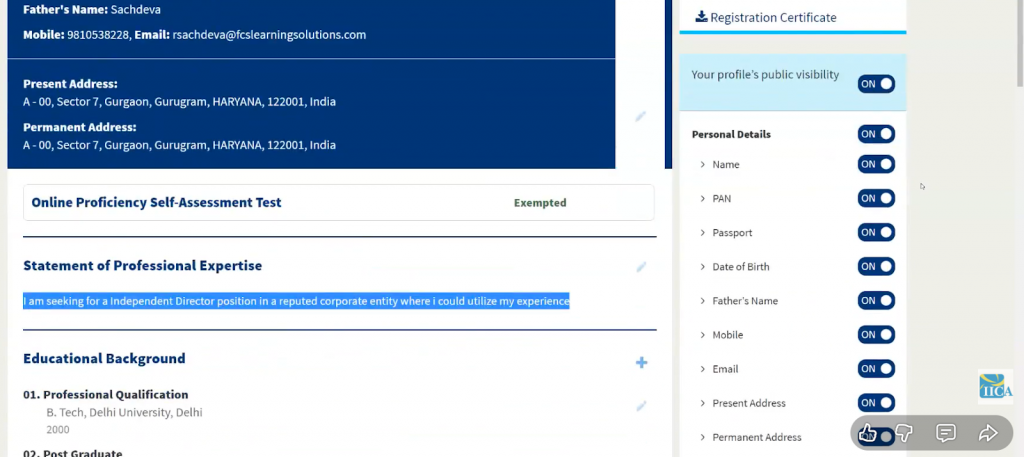
My recommendation: be generous with professional information but protective of personal details. Make your qualifications, industry expertise, skills, and general experience summary fully visible. This maximizes your discovery by interested companies. However, restrict your exact birth date, complete residential address, and direct contact details until a company demonstrates serious interest by paying to access your full profile.
One strategic decision is whether to display your photograph publicly. Photos add a personal connection and make your profile more memorable—human faces naturally draw attention. However, some directors prefer anonymity at the summary level to avoid unsolicited approaches or for cultural reasons. There’s no right answer; consider your comfort level and professional goals.
Importantly, even with maximum privacy settings, verified information from government databases (like DIN, existing directorship positions, date of appointment) may be visible as this is public record information. You cannot hide statutory disclosures.
How often should you update your profile and qualifications?
Profile freshness signals active engagement and professionalism. Companies often filter to see recently updated profiles, assuming these directors are active and serious about board opportunities.
Make it a habit to review and update your profile quarterly. Even if there’s no major change, adding a new skill, updating a current position description, or refreshing your summary demonstrates that you’re engaged with the platform. Set a recurring calendar reminder for the first week of each quarter.
Major updates should happen immediately when you have significant news: new qualifications earned (completed a director education program, obtained new certification), job change or promotion, completion of a major project or achievement, additional directorship appointments, or industry recognition/awards received.
Also update when market dynamics shift. If you’ve developed expertise in emerging areas (like ESG, AI governance, or cybersecurity), add these keywords and skills even if they’re relatively new competencies. Companies increasingly seek directors with contemporary knowledge.
Your availability status should be truthful and current. If you’re actively seeking opportunities, indicate that. If you’ve accepted positions and are at your maximum board capacity, update your status to reflect limited availability. Integrity in representation builds trust.
Finally, after passing the proficiency test, prominently highlight this achievement. It’s a differentiator that signals commitment and verified competency.
What are the compliance requirements after databank registration?
Registration isn’t a one-time event—it comes with ongoing obligations. Let me clarify what’s expected of you as a registered independent director to maintain good standing.
What annual declarations and updates are required for registered directors?
As a registered member of the ID Databank, you have two levels of compliance obligations: obligations to the databank platform itself, and obligations to company boards if you’re appointed as an independent director.
For the databank platform, your primary obligation is keeping your registration active through timely renewal (unless you opted for the lifetime plan).
If you chose annual or 5-year subscription, you must renew within 30 days from the expiry date. The platform typically sends reminder emails and SMS 60 days, 30 days, and 7 days before expiry. Don’t ignore these—if your registration lapses, your name is removed from the databank.
You’re also required to keep your profile information accurate and up-to-date. While there’s no mandated annual declaration to IICA, you have a professional obligation to ensure that your qualifications, experience, directorship positions, and personal details remain current. If you’re convicted of an offense, become insolvent, or are disqualified as a director under any law, you must update your status immediately.
For directors who are actually appointed to company boards, there are additional compliance requirements under the Companies Act. Every time you submit the declaration required under Section 149(7) of the Companies Act to your company’s board (annual declaration of independence), you must also submit a declaration confirming compliance with ID Databank rules. This essentially means confirming that your name remains included in the databank and your registration is current.
Keep copies of all these declarations in your records.
Maintain a compliance calendar tracking your databank renewal date, company-specific declaration dates, and other statutory timelines. Missing these can have serious consequences including removal from boards or regulatory penalties.
What steps should you take after being appointed as an independent director?
Congratulations on your appointment! Now you need to inform the platform and fulfill certain obligations to maintain compliance.
How do you notify the platform of your appointment?
While the ID Databank system may auto-populate your directorship data from MCA21 after the company files Form DIR-12 (appointment intimation), I recommend proactively updating your profile.
Log in to your dashboard, click on ‘My Account’ and navigate to ‘Profile’. Click on the “Directorship/KMP Positions” section, and add the new appointment details: company name, CIN, date of appointment, nature of directorship (independent non-executive), and board committees you’ve been appointed to.
This update serves multiple purposes. It keeps your profile current for other companies evaluating you for additional directorships (subject to legal limits on the number of directorships). It also signals to the platform that you’re actively engaged in board work, enhancing your profile’s credibility.
Additionally, inform your company’s board that you’re registered with the ID Databank and provide your registration number. This helps the company fulfill its own compliance requirements related to appointing directors from the databank.
What are your continuing professional development (CPD) obligations?
Once appointed, your learning shouldn’t stop. While there’s no mandatory CPD hours requirement imposed by the ID Databank currently (unlike some professional bodies like ICAI or ICSI), I strongly recommend continuous engagement with LMS courses, webinars, and updates.
Many companies expect their independent directors to complete a minimum number of training hours annually—typically 8-10 hours. The ID Databank’s e-learning platform makes fulfilling this expectation convenient. Complete 1-2 advanced modules quarterly to stay updated on regulatory changes, emerging governance practices, and industry developments.
Attend webinars and masterclasses organized by IICA through the databank portal. These sessions often feature industry experts, regulators, and experienced directors sharing insights on contemporary issues. Participation demonstrates your commitment to excellence.
Document your learning activities. Maintain a personal CPD log noting courses completed, webinars attended, and certifications earned. This log becomes valuable evidence of your professional diligence if ever questioned by regulators, shareholders, or during board evaluations.
What should you do if you resign or are removed from the board?
Director exits happen for various reasons—completion of tenure, resignation due to personal reasons, removal by shareholders, or company-related issues. Proper handling of your databank status during exits is important for maintaining professional reputation.
How do you update your status in the databank?
After cessation of your directorship (whether by resignation, completion of term, or removal), update your profile within 15 days.
Log in to independentdirectordatabank.in, click on ‘My Account’ then select ‘Profile’.
Thereafter, edit you information in the ‘Position tab’
If you’re resigning, it’s courteous to update your status only after formally notifying the company board and filing Form DIR-11 with MCA. This ensures consistency across records and avoids confusion.
For removals, enter the date on which the shareholder resolution removing you was passed. While this might be uncomfortable professionally, honesty is paramount. Companies conducting due diligence will verify directorship history through MCA records anyway, so transparency from the start builds trust rather than raising red flags.
How does resignation affect your registration?
Your cessation from one or more board positions does not affect your ID Databank registration status.
Your registration remains valid for the subscription period you paid for, regardless of whether you currently serve on any board.
This is an important distinction. The databank is a repository of individuals eligible and willing to be appointed, not just those currently serving. After resigning from a directorship, you remain in the databank and continue to be visible to companies searching for directors.
However, if you’ve resigned from all your directorships and no longer wish to pursue independent director opportunities, you can choose to let your registration lapse by not renewing when it expires. Or, by switching off your profile visibility from the dashboard.
The platform does not allow mid-term cancellation with refunds, so if you’ve paid for a year or longer, you might as well keep your profile active for the paid period.
How can companies register and use the ID databank?
While this guide primarily focuses on individual director registration, understanding how companies use the platform helps you optimize your profile for better visibility. Let me briefly explain the corporate side of the databank.
Why should companies register with the ID Databank?
Companies required to appoint independent directors under the Companies Act, 2013—which includes all listed companies and certain unlisted public companies based on paid-up capital, turnover, or borrowings—benefit significantly from using the ID Databank.
The platform provides access to a verified pool of over 38,000+ registered independent directors (as of October 2025), drastically simplifying the search process compared to traditional networking-based director searches. Companies can use advanced filters to identify candidates matching precise requirements: industry expertise, qualifications, location, experience level, and specific skills like audit committee expertise or technology knowledge.
Registration also helps companies demonstrate robust governance practices to stakeholders, investors, and regulators. Using the official government databank signals that the company takes independent director appointments seriously and follows structured, compliant processes rather than informal referrals.
For companies struggling to find qualified candidates—especially smaller firms or those in tier-2 cities where professional networks are limited—the databank is invaluable. It democratizes access to talent, allowing any registered company to connect with directors they might never encounter otherwise.
How can companies complete the CIN-based registration process?
Company registration follows a parallel but simpler process compared to individual registration. Companies must first register on the MCA portal if they haven’t already. Using the company’s Corporate Identification Number (CIN), an authorized signatory (typically the Company Secretary or Managing Director) logs into MCA Services.
Under “ID Databank Registration,” they select “Corporate Registration” (not individual).
After entering the CIN and clicking submit, the registered email address associated with that CIN auto-populates. The system sends an OTP to this email, which must be verified.
Upon OTP verification, the company is redirected to the ID Databank portal, similar to individual registration. Login credentials for the databank are sent to the company’s registered email. Using these credentials, the authorized person logs in and completes the company profile.
How do you designate officers and manage company access?
The company profile form requires basic details like company name (auto-filled from CIN), industry sector, location, number of employees, annual revenue range, and a brief company description. The key requirement is designating up to two officers who will have access to search and shortlist directors from the databank.
These designated officers (typically Company Secretary and HR head or an independent director committee member) receive separate login credentials. They can access the director search functionality independently, allowing the company to conduct parallel searches or delegate the task appropriately.
Companies must accept terms and conditions acknowledging that while the databank provides verified information, the company remains responsible for conducting its own due diligence before appointing any director. IICA and MCA do not warrant the suitability or accuracy of director profiles beyond basic verification.
What are corporate subscription fees?
After completing the profile, companies must select a subscription plan and pay fees to access director profiles. The fee structure for companies is separate from individual fees and is typically structured based on usage—per profile accessed.
Exact corporate fees are not disclosed by IICA and communicated on the platform. Companies should check the current fee schedule before subscribing. Payment is through the same gateway options available to individual registrants.
How do Companies Search and filter Independent Directors
Understanding how companies use the Independent Director’s Databank is key to optimising your profile strategically. Once a company registers on the platform, it gains access to a comprehensive search interface that allows them to identify potential directors based on specific criteria aligned with their governance needs.
Companies can filter candidates using several parameters, including gender, nationality, educational level, name of qualification, institution name, professional expertise, experience as a Key Managerial Personnel (KMP), residential location, age, and sector-specific experience. They can also search based on whether a person has served as a director or KMP in listed or unlisted companies, possesses a Director Identification Number (DIN), or has held senior leadership roles such as Chairman or CEO. These criteria help companies refine their searches and create a shortlist of candidates with relevant qualifications, experience, and expertise.
Once search results are generated, companies first see summarised profiles that provide a brief overview of each candidate. To access the detailed profile — which includes comprehensive career history and additional information — companies must shortlist the profile, add it to their cart, and pay a nominal profile download fee to IICA. This two-step process means that the information presented in your summarised profile plays a crucial role in capturing the company’s interest and prompting them to view your complete details.
It is important to note that companies are required to conduct their own due diligence before making any appointment. The databank facilitates discovery and access but does not verify the suitability or accuracy of the information provided by individuals.
Conclusion
Registering with the Independent Director Data Bank is your formal entry into India’s professional independent director community.
But as I’ve shown you throughout this guide, registration is just the foundation. What truly matters is how you leverage the platform—
- optimizing your profile,
- continuously upgrading your knowledge through LMS courses,
- passing the proficiency test, and
- actively maintaining your presence.
The ID Databank represents a paradigm shift in how independent directors are identified and appointed in India. For aspiring directors, it levels the playing field by providing visibility beyond traditional networks. For existing directors, it offers professional development resources and a credible platform to showcase expertise. For companies, it delivers a verified pool of qualified talent, making board composition more robust and compliant.
As you embark on your ID Databank journey, remember these key takeaways.
First, prepare thoroughly before starting registration—having all documents and information ready prevents frustration and incomplete applications. Second, invest time in creating a comprehensive, keyword-optimized profile that showcases your unique value proposition. Third, engage with the platform actively—complete LMS courses, pass the proficiency test, and keep your profile updated.
Don’t view the proficiency test as a hurdle but as an opportunity to validate and enhance your knowledge. The certification adds credibility and demonstrates your commitment to excellence. Similarly, treat subscription renewal as a professional investment, not an expense. The lifetime plan, while requiring higher upfront cost, eliminates future renewal hassles and proves economical for long-term board careers.
Most importantly, understand that being in the databank doesn’t guarantee board appointments—it creates opportunities. You must still network, develop expertise, build reputation, and approach the board journey with patience and persistence. The databank is a tool, and like any tool, its effectiveness depends on how skillfully you wield it.
I’ve walked you through every phase of registration, troubleshooting, profile optimization, and ongoing compliance. Follow this roadmap, and you’ll navigate the ID Databank system confidently and maximize your chances of securing meaningful independent director opportunities that align with your expertise and career aspirations.
Your journey to the boardroom starts with registration, but it’s sustained by continuous learning, strategic positioning, and unwavering commitment to corporate governance excellence. The Independent Director Data Bank gives you the platform—now it’s up to you to make the most of it.
Frequently Asked Questions
Is ID Databank registration mandatory for all independent directors?
Yes, registration is mandatory for anyone serving as an independent director in any company as of December 1, 2019, or later. If you intend to be appointed as an independent director in the future, you must register before your appointment. The requirement applies to both listed and unlisted companies meeting the independent director threshold criteria under the Companies Act, 2013.
Can I register without a Director Identification Number (DIN)?
Yes, you can register without a DIN using your PAN or Passport number. DIN is not mandatory for registration itself—only for actual appointment as a director. Aspiring independent directors without any prior directorship experience can register voluntarily using PAN, making themselves visible to companies seeking board candidates.
How long does the entire registration process take?
The actual registration can be completed in 30-45 minutes if you have all documents ready. However, expect 2-3 business days for OTP issues or MCA verification delays. Payment confirmation is usually instant, though occasionally it takes up to 24 hours. Post-registration, accessing LMS and preparing for the proficiency test is at your own pace.
What is the validity period of ID Databank registration?
Registration validity depends on your subscription plan: 1 year for annual plan (Rs. 5,900 total), 5 years for the five-year plan (Rs. 17,700 total), or lifetime for the lifetime plan (Rs. 29,500 total). You must renew annual or 5-year subscriptions within 30 days of expiry, failing which your name is removed from the databank.
Can I change my subscription plan after initial registration?
The platform doesn’t typically allow mid-term plan changes. If you’ve paid for an annual plan, you remain on that plan until expiry. However, during renewal, you can opt for a different plan. If you initially chose annual but want lifetime coverage, select the lifetime plan when renewing—though you won’t get credit for your previous payment.
What happens if I don’t pass the proficiency test within two years?
Failing to pass the proficiency test within two years of registration results in removal of your name from the databank. You can extend the period for another one year by paying a fees of ₹1,000/- + GST However, there’s no limit on the number of attempts—you can retake the test multiple times within that year. The key is to start preparing early and use mock tests to assess readiness before attempting the actual test.
Are there any exemptions from the online proficiency test?
Only if you fall under the following category:
Professional Practitioners: Chartered Accountants, Cost Accountants, Company Secretaries, or Advocates with 10+ years of practice experience are automatically exempt
Experienced Directors/KMPs: Those with 3+ years as directors or key managerial personnel in listed companies, unlisted public companies (₹10 crore+ paid-up capital), foreign corporations ($2 million+ capital), or statutory corporations are exempt
Senior Government Officials: Director-level or equivalent officials from central/state ministries (commerce, corporate affairs, finance, industry) and Chief General Manager+ positions at SEBI, RBI, IRDAI, or PFRDA with relevant regulatory experience are exempt
All others must pass the test.
The exemption is automatically applied based on the information you fill in the “Poistion Tab” at the time of completing the profile.
Can foreign nationals register in the ID Databank?
Yes, foreign nationals can register using their passport number. The registration process is identical, except you’ll use passport details instead of DIN or PAN. Ensure your passport is valid for at least six months beyond registration date. Foreign nationals must provide international mobile numbers and email addresses for OTP verification and communications.
How do I update my email or mobile number in the databank?
Pre-filled email and mobile numbers from MCA21 cannot be changed directly in the databank. You must first update these details with MCA by filing Form DIR-6 or DIR-3 KYC. Once MCA processes your update (2-3 working days), the changes sync with the databank. Allow 24 hours after MCA update before attempting any databank operations requiring OTP.
What documents are required for ID Databank registration?
Essential documents include identity proof (DIN/PAN/Passport), educational certificates (degree, diplomas, professional qualifications), professional experience details (employment history with dates), directorship/KMP position details if applicable, recent passport-sized photograph in digital format, and active email address and mobile number. Having these ready before starting registration streamlines the process significantly.
How much does ID Databank registration cost
The fee structure is
- ₹5,000 + 18% GST (total Rs. 5,900) for 1-year subscription,
- ₹15,000 + 18% GST (total Rs. 17,700) for 5-year subscription, and
- ₹25,000 + 18% GST (total Rs. 29,500) for lifetime subscription.
Late renewal after expiry incurs an additional Rs. 1,000 penalty plus regular renewal fees.
Can I register using a mobile device?
While mobile registration is technically possible, the portal is optimized for desktop browsers. Complex forms, document uploads, and multiple page navigations work more smoothly on desktop or laptop computers. If you must use mobile, use landscape orientation and request desktop version of the site in your browser settings for better experience.
What should I do if my OTP is not received during registration?
First, check spam/junk folders for email OTP. Verify the mobile number and email match your MCA21 registered details. If there’s a mismatch, file Form DIR-6 or DIR-3 KYC with MCA to update contact details before continuing registration. Wait at least 3-5 minutes before requesting another OTP, and ensure stable network connectivity.
How do companies find my profile in the databank?
Companies search using filters like location, industry experience, qualifications, expertise areas, and skills. Your profile appears in search results if it matches their filter criteria. To improve discoverability, ensure 100% profile completion, use relevant keywords throughout your experience description, list specific skills and expertise areas, and keep your profile updated regularly.
Is the proficiency test certificate valid for lifetime?
Yes, once you pass the online proficiency self-assessment test with 50% or higher aggregate score, your certificate is valid for lifetime. There’s no requirement for periodic retesting unless future regulations mandate it. This certificate demonstrates verified competency and remains an important credential throughout your independent director career.

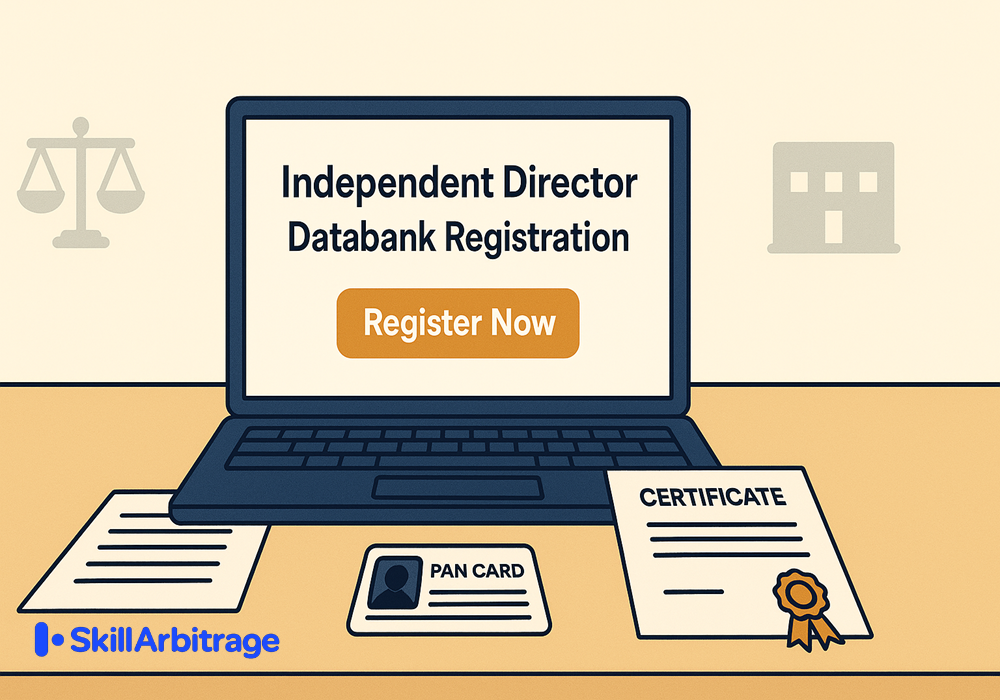


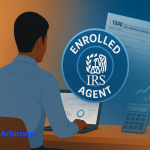


 Allow notifications
Allow notifications